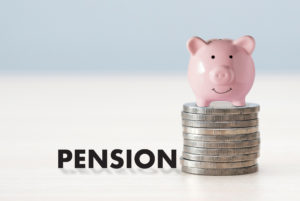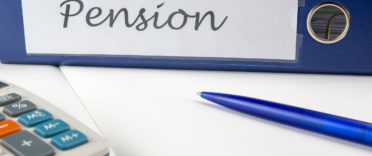
How much can you really take out of your pension to see you through retirement in comfort, but without burning through your savings too quickly? Some wealth managers say 5% a year, some research says less than 2%. The truth is there isn’t one number that will work for everyone, as there are a few factors at play. This guide gives you a few pointers to help you calculate a sustainable withdrawal rate, so your hard-earned pension cash lasts as long as you do.
What is pension drawdown?
Retirement has two main phases – saving up (building up your pension pot) and drawing down (taking your savings out as an income for you to spend). In industry jargon, these are called the accumulation and decumulation phases. Pension drawdown is what happens when you switch between the two phases and start taking money out of your pot. If you have a defined contribution pension, you can do this by using a flexible drawdown product which lets you keep the money you don’t need right now invested so it can keep growing. This hopefully means your pot will stretch to fund as many of your retirement years as possible.
For more detail on the ins and outs of pension drawdown, read our article 'What is pension drawdown and how does it work?'
How to withdraw from your pension?
There are a number of options available to you, and if you like you can do a combination of them thanks to the pension freedoms that have been in place since 2015. Below, we explain each of the options:
Flexi-access pension drawdown
You can buy a flexi-access pension drawdown product, such as those offered by all the big pension scheme providers. This is a fund which gives you a regular, adjustable income that can flex to your needs. You don’t have to go with your existing pension provider, in fact, you should shop around in case a different company can better meet your needs. Look at the range of funds on offer, their performance and charges.
Annuity
You can buy an annuity, which gives you a set regular payout – if you choose a lifetime annuity you get a guaranteed income for life, but you can also choose it over a shorter fixed period (see below for more on annuities versus pension drawdown).
Lump-sum withdrawal
You can take a lump sum out as cash, up to 25% of the value of your pot, and you won’t pay tax on this.
If you wanted to, when you reached retirement age you could close your pension scheme and withdraw the whole amount as cash. But this is not a good idea for a number of reasons, not least that it could trigger a huge tax bill.
The 4% rule and why it no longer works
Many people, when they first start drawing their pension, take advantage of the 25% tax-free lump sum rule to withdraw some cash, whether it’s to pay for a big purchase such as a car or perhaps to pay off debts such as a credit card or loan. But then what should they do with the rest of the pot to make sure it continues to pay a large enough income? You need to get your strategy right to ensure you are taking cash out in a sustainable way, otherwise, you could quickly run out of money.
The question is, what is a sustainable level of income to take each year? A few things will change the answer to this, including:
- the size of your pot
- how much income you want
- how long you are likely to live
- your investment returns
- inflation
There is an often-cited rule of thumb that 4% is the maximum amount you can take out of your pension each year if you are to avoid running out of money. About 20 years ago, a US study argued that if you had a portfolio which was 50% US shares and 50% US government bonds (or UK shares and gilts, say, for a UK investor) then over 30 years if you drew 4% a year as an income, that income would increase with inflation and it would be sustainable for your whole retirement. A few years ago, life and pensions company Aegon looked at the study again, changing the asset mix slightly to add a little more in shares, and actually debunked the 4% rule. Aegon found that a 65-year old who followed this rule over 30 years would, in fact, have a one in five chance of running out of money. Most people would not like those odds.
What is a sustainable pension withdrawal rate?
Somewhere between 1.7% and 3.6% a year – the difference depends on your attitude to risk. If you wanted to be 99% certain that you wouldn’t run out of money in retirement, you would have to stick to a withdrawal rate of just 1.8% per year. So, for example, if you wanted an income of £20,000 a year at a withdrawal rate of 2%, you would need a £1m pension pot. This just goes to show that conventional wisdom does date and needs to be reviewed and challenged. (As an aside, these numbers also show you how valuable a final salary pension scheme is to be able to deliver that income through the whole of someone’s retirement and why, if you cash it in, you could run out of money in retirement.)
Listen to Damien talking about the 4% rule in the Money to the Masses podcast episode 210 'Debunking the 4% rule'.
How to calculate a sustainable pension drawdown amount?
As we have seen, what a sustainable drawdown amount looks like for you will depend on a few factors, such as the size of your pension fund now, your contributions if you are still paying in, how you are invested, how stock markets perform, and how long you expect to live.
Generally speaking, you’ll want to err on the side of caution: research from AJ Bell found that 41% of people in drawdown are withdrawing more than 10% of their money each year, which is quite startling. To give you more of an idea of the right figure for you, here is a link to our pension calculator, try playing around with it and see what numbers you come up with.
How to generate an income from your pension?
To get a decent income from your pension that really is sustainable for however long you spend in retirement, it goes without saying that your pension savings need to work really hard. This means making the best investment decisions you can while taking into account your personal risk tolerance and the appropriate level of risk for your age, wealth and circumstances.
There are a few common ways for retirees to generate a sustainable income.
You could build a portfolio of companies paying sustainable dividend payments, or use an equity income or bond fund which pays out income monthly, quarterly or annually. Your income needs to grow over time in line with inflation to avoid your purchasing power being eroded. Not only do you want to invest in cash-rich companies that are unlikely to cut their dividends in future, even in tough conditions, ideally you want those that can pay a high and growing yield.
There are some investment trusts that pride themselves on their track record of high and rising dividend payouts over many years, and these are certainly an option for income-seeking retirees.
Money to the Masses’ 80-20 Investor service has created an Income Heatmap to show you how to create the perfect income portfolio. It’s based on research into all the main UK equity income funds which aim to give investors an income stream, looking at their actual returns and how their income has grown over the past 11 years. Bear in mind you could choose an equity income fund with a global or other regional remit, there’s no need to stick to the UK market, diversification is always a good idea. You can take out a 30 day free trial of 80-20 investor and take advantage of all of the research, tools and analysis that is available. 80-20 investor is designed to maximise investor returns and to reduce the burden and stress associated with DIY investing.
Things to consider before drawing down your pension
Since 2015, all new income drawdown plans that have been set up are called ‘flexi-access’ or ‘flexible’ drawdown’. They allow you to take 25% of your pension pot upfront as a tax-free lump sum, and you can make unlimited withdrawals after that.
Before 2015, you could also have a ‘capped drawdown’ plan, which limited how much you could take out of your pension pot to 150% of the income you could get from a lifetime annuity. No new capped drawdown plans are being set up, but if you’ve already got one, it carries on under its existing rules. There are maximum withdrawal limits in place and, if you go above them, you’ll get lower tax relief on future pension savings.
So, before you start drawing down your pension, if you’ve already got a product in place, make sure you know which type it is so you don’t breach any withdrawal limits when you start taking your money out.
Think also about your financial situation as a whole and consider your income from all sources. Here are some common questions you should ask yourself:
- Are you entitled to the state pension?
- Should you defer it if you can afford to live on your pension income?
- Do you have income from a rental property or a share portfolio?
- Should you use part of your savings to buy an annuity and use that for day-to-day living costs?
Ideally, you will want to be frugal with what you take out of your pension pot, especially in the early days of your retirement when you might be tempted to spend with abandon. Keeping your money invested as long as possible could help it last longer, assuming your investments perform. This type of planning is where a good financial adviser can really prove their worth. If you don’t have one, read our guide to finding a financial adviser you can trust.
Pension drawdown vs annuity
With pension drawdown, you have the flexibility to take out as much income as you need, whenever you choose. You can time your withdrawals so as not to push yourself into a higher income tax bracket during a given tax year, so this is very useful for tax planning purposes. And, importantly, the money you don’t draw down stays invested so it has a chance to keep growing and securing you an income for years to come, although investment growth isn’t guaranteed.
When you’re deciding how best to draw money out of your pension, it’s also worth considering an annuity. Although you could end up locked into a poor rate if you don’t choose your product carefully, annuities can be useful for people who want the certainty of a guaranteed retirement income. When you buy an annuity, you effectively sell some or all of your pension pot to an insurance company in exchange for a fixed annual payout every year for the rest of your life (a lifetime annuity) or for a set period such as five or ten years (a fixed-term annuity). Your money is no longer at risk in the stock market when you choose an annuity over keeping your pot invested.
There are some free drawdown versus annuity calculators available online to help you compare the two options.




